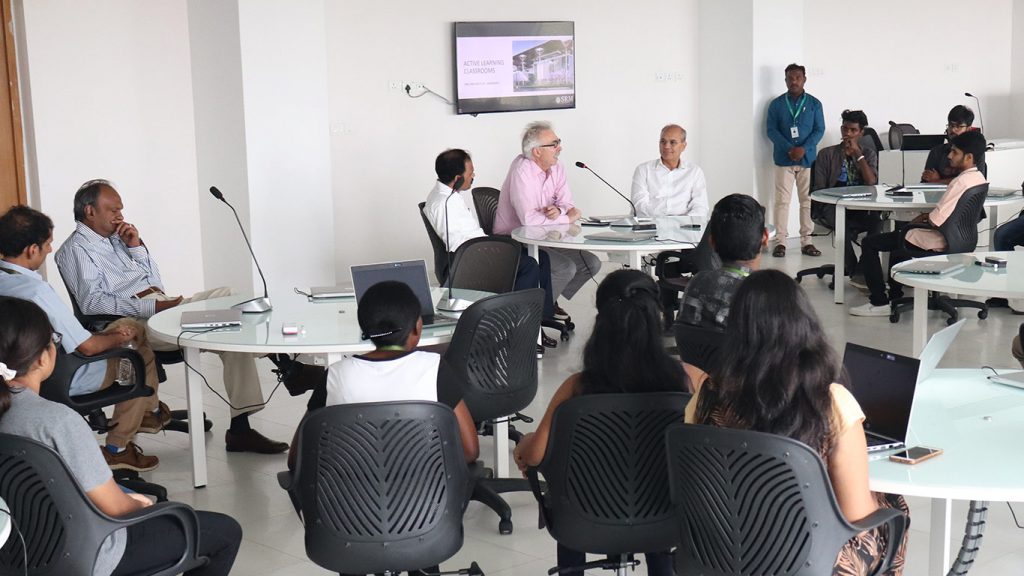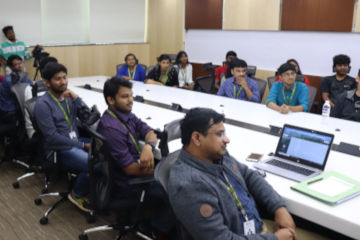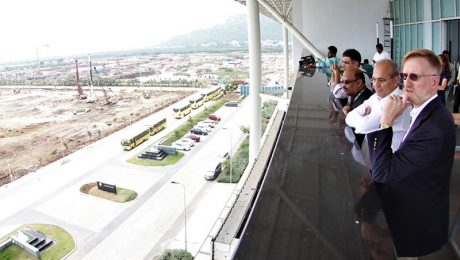SPIC MACAY founder shares vision behind his renowned nationwide movement of the music and arts

Dr. Kiran Seth, Founder, Spic Macay
Dr. Kiran Seth, distinguished founder of SPIC MACAY (The Society for Promoting Indian Classical Music and Culture among Youth) and Professor Emeritus of Mechanical Engineering at IIT Delhi spoke to SRM AP students on the guiding philosophy behind his organisation and the broader role it plays in shaping minds. “What we want to do,” he said, “is to take you on a journey to help you become whatever you want to be – but much, much better.”
- Published in News
UC Berkeley/SLABS workshops: Inspired learning for liberal arts students
 |
Nicholas Dirks, former Chancellor of UC Berkeley and Honorary Pro Chancellor, SRM AP addressed faculty and students on the true meaning of liberal arts pointing out that many of the top corporate leaders attended liberal arts institutions enabling them to think across disciplines and to communicate effectively. “SLABS creates the basis for all students to have a kind of interdisciplinary education and faculty to have a community of scholars to build larger research programs.”
- Published in News
SRM AP AND UC BERKELEY: INTEGRATING ENTREPRENEURSHIP & DESIGN INTO ENGINEERING EDUCATION.
The October 2018 visit by faculty from UC Berkeley’s Sutardja Center for Entrepreneurship (SCET) and Jacobs Institute for Design Innovation put the focus on four industry pillars of entrepreneurship and technology, design and innovation. The UC Berkeley team took a campus tour and interacted with the SRM AP engineering faculty highlighting the importance of entrepreneurship/design principles in engineering education. In short, design skills to create new successful products and business skills to bring them to market.
- Published in News
2019 Semester Abroad students bound for product design boot camp at UC Berkeley

SRM AP’s UC Berkeley Semester Abroad is jointly conducted by the Sutardja center for entrepreneurship and technology (SCET) and Jacobs institute of design and innovation. After a successful program in 2018 a fresh SRM AP batch is gearing up for the packed schedule ahead of them in January 2019.
- Published in News


